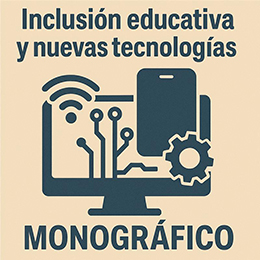The «PBL WORKING ENVIRONMENT» as interactive and expert system to learn the problem-based learning method
DOI:
https://doi.org/10.51302/tce.2016.66Keywords:
collaborative learning environment, Problem-Based Learning (PBL), active learning, training of teachers and trainersAbstract
The «PBL working environment» is a virtual environment developed in the framework of SCENE project (profeSsional development for an effeCtive PBL approach: a practical experiENce through ICT-enabled lEarning solution), co-funded by the European Lifelong Learning Program. The «PBL working environment» is devoted to prepare headmasters and teachers of secondary and vocational schools to use ProblemBased Learning (PBL) pedagogy effectively. It is a student-centered pedagogy where learners are «actively» engaged in real world problems to solve or challenges to meet. Students develop problem-solving, self-directed learning and team skills.
The «PBL working environment» is an virtual tool including three main elements:e-learning platform, virtual facilitator and PBL repository. Teachers, trainers and headmasters/school managers learn the PBL pedagogy by attending an on-line course (e-learning platform) delivered through the «inductive method». It allows learners to experience PBL approach, by practicing it stage by stage, and then learn to turn practice into theory by abstracting their experience to build a theoretical understanding. Since generating the proper scenario is the most critical aspect of PBL, after benefiting from the on-line course, users can benefit from a further support: the Virtual Facilitator. It provides tips and hints on how correctly design a problem scenario and by asking questions to collect data on user's specific needs. The Virtual Facilitator is able to provide a/or more suitable example(s) which match as closest as possible the teacher/trainer need. Finally, users can share problem scenarios and projects of different subjects of studies and with different characteristics uploaded and downloaded in the PBL repository.
Downloads
References
Barrows, H. S. and Tamblyn, R. M. [1980]: Problem-based learning: an approach to medical education. New York,Mass.: Springer.
Bastos A. S., Correnti S., Dias, P., Mergendoller J.R. and Rudman, P. [2012]: Course curriculum. Produced in the framework of SCENE project, N. 519367-LLP-1-2011-1-IT-KA3-KA3MP.
Correnti S., Feituri M., Dias, P., Edirisingha P. and Mergendoller J. R. [2012]: Instructional design handbook.Produced in the framework of SCENE project, N.519367-LLP-1-2011-1-IT-KA3-KA3MP.
Dochy, F., Segers, M., van den Bossche, P. and Gijbels,D. [2003]: «Effects of problem-based learning: a metaanalysis», Learning and Instruction, 13, pp. 533-568.
Feituri, M., Kear, S. and Rudman, P. [2012]: Executive project. Produced in the framework of SCENE project,N. 519367-LLP-1-2011-1-IT-KA3-KA3MP.
Gallagher, S. A., Sher, B. T., Stepien, W. J. and Workman,D. [1995]: «Implementing problem-based learning in the science classroom», School Sciencies and Mathematics, 95, pp. 136-146.
Hung, W., Jonassen, D. H. and Liu, R. [2008]: «Problembased learning», in J. M. Spector, J. G. van Merriënboer, M. D., Merrill and M. Driscoll (eds.), Handbook of research on educational communications and technology (3rd ed.), Mahwah (Ney Jersey): Erlbaum.
Larmer, J. and Mergendoller, J. [2010]: «Seven essentials for project-based learning», Educational Leadership,68 (1), pp. 34-37.
Neville, A. J. [2009, Retrieved, November, 2012]: «Problem-based learning and medical education forty years on. A review of its effects on knowledge and clinical performance. Medical principles and practice: international journal of the Kuwait University», Health Science Centre, 18 (1), pp. 1-9. PMID 19060483.
Schmidt, H. G. [1983]: «Problem-based learning: rationale and description», Medical Education, 17, pp. 11-16.
Downloads
Published
How to Cite
Issue
Section
License
Copyright (c) 2016 Susanna Correnti

This work is licensed under a Creative Commons Attribution-NonCommercial-NoDerivatives 4.0 International License.


























